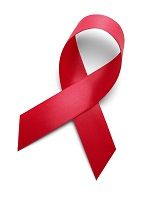CDC: Antiretroviral Therapy Lagging
U.S. physicians may not be following the latest guidelines on HIV care, a US Centers for Disease Control and Prevention (CDC)'s Morbidity and Mortality Weekly Report concludes.

U.S. physicians may not be following the latest guidelines on HIV care, a US Centers for Disease Control and Prevention (CDC)’s Morbidity and Mortality Weekly Report concludes.
Though there have been world-changing advances in treating HIV infection since the virus made a zoonotic leap out of the jungles decades ago, AIDS remains a disease that is managed, not cured.
The good news is that because of available therapies, an estimated 1.2 million people in the US were living with HIV as of 2011. With antiretroviral therapy (ART) that suppresses their viral load, these patients can have a nearly normal life expectancy and also have a low risk of spreading the virus.
But the report notes that of those estimated 1.2 million HIV-infected people, 70% “had not achieved viral suppression.” That included 66% who had been diagnosed but were not getting HIV medical care, and 4% who were in care but not getting ART, and 10% who had been prescribed ART but still had high viral loads.
“We’re not reaching nearly enough people,” CDC Director Tom Frieden, MD, told reporters in a conference call.
One problem is that even after diagnosis, patients are not getting immediate ART, even though the therapy suppresses the virus in 76% of cases. Early ART has also been shown to dramatically reduce the risk of sexual transmission. The CDC said that might be because clinicians are not following the latest treatment guidelines. Before 2011, ART was withheld until patients’ CD4+ T-cell count dropped below 500.
Now the rule is to start ART immediately.
That became clear in May, 2011, with the results of the HPTN 052 clinical trial, an international HIV prevention trial sponsored by the US National Institutes of Health. In it, heterosexual couples where one partner had HIV had a 96% reduction in transmission when the infected partner was getting ART.
The least costly way to contain the virus is by prevention focused on eliminating risky behaviors.
According to the CDC statistics, there are 920,900 men living with the virus and 280,000 women. Among the women, 209,700 got the virus through heterosexual contact and 70,100 through injection drug use.
Among the men, 647,700 was through male-to-male sexual contact, and 109,500 through injection drug use, with 64,800 men exposed through both injection drug use and male-to-male sex.
But prevention efforts are lagging. The CDC finds that another 50,000 people annually are infected with the virus. That number has risen since 2006, when there were about 48,600 new infections in the US. But it has dropped from 2007, when there were 56,000 newly diagnosed cases.
The cost of care is significant. Lifetime treatment is about $380,000 per patient, according to the CDC’s 2010 estimates. The projected lifetime cost of care for one year’s new cases (those diagnosed in 2009) was $16.6 billion.
2 Commerce Drive
Cranbury, NJ 08512
All rights reserved.